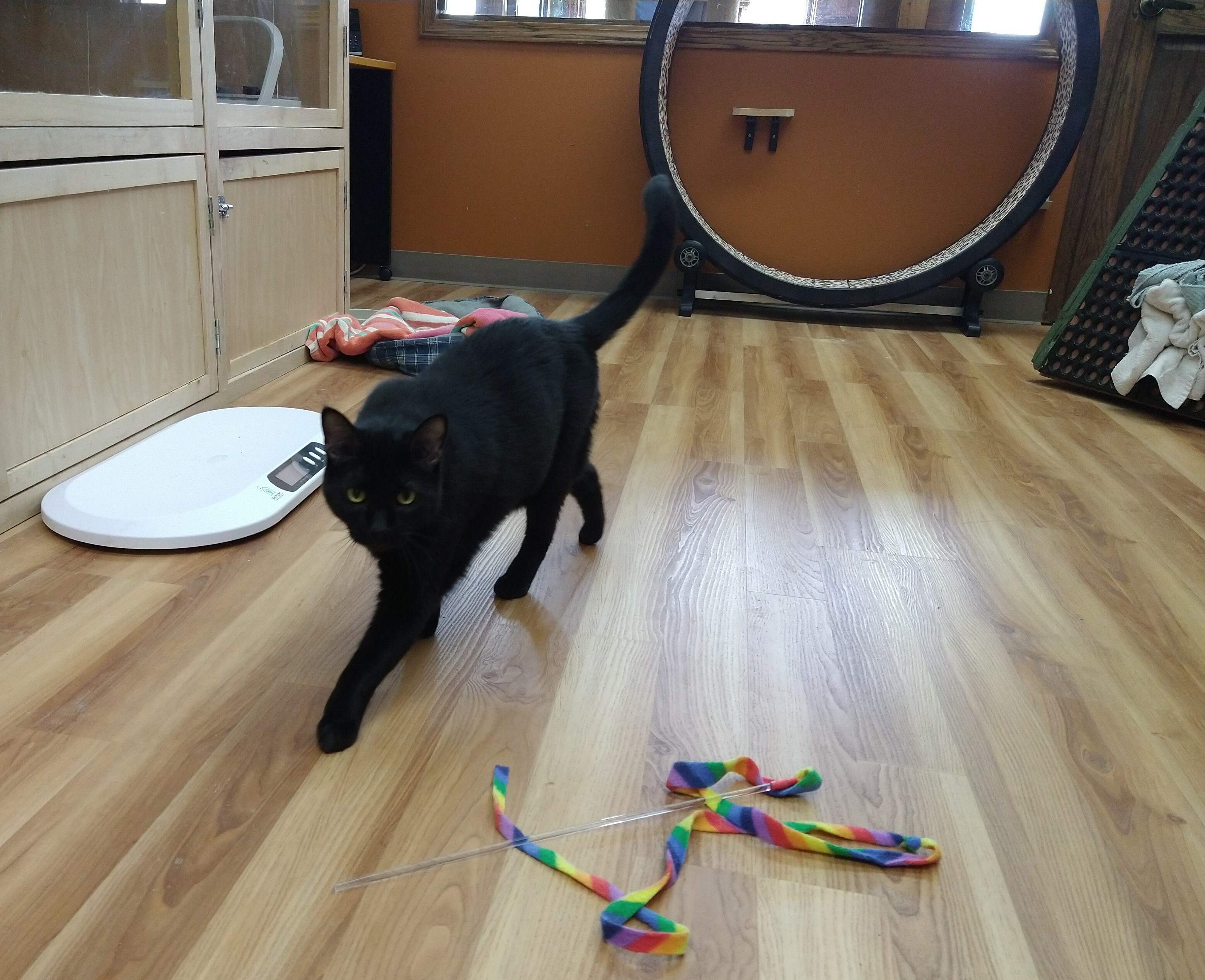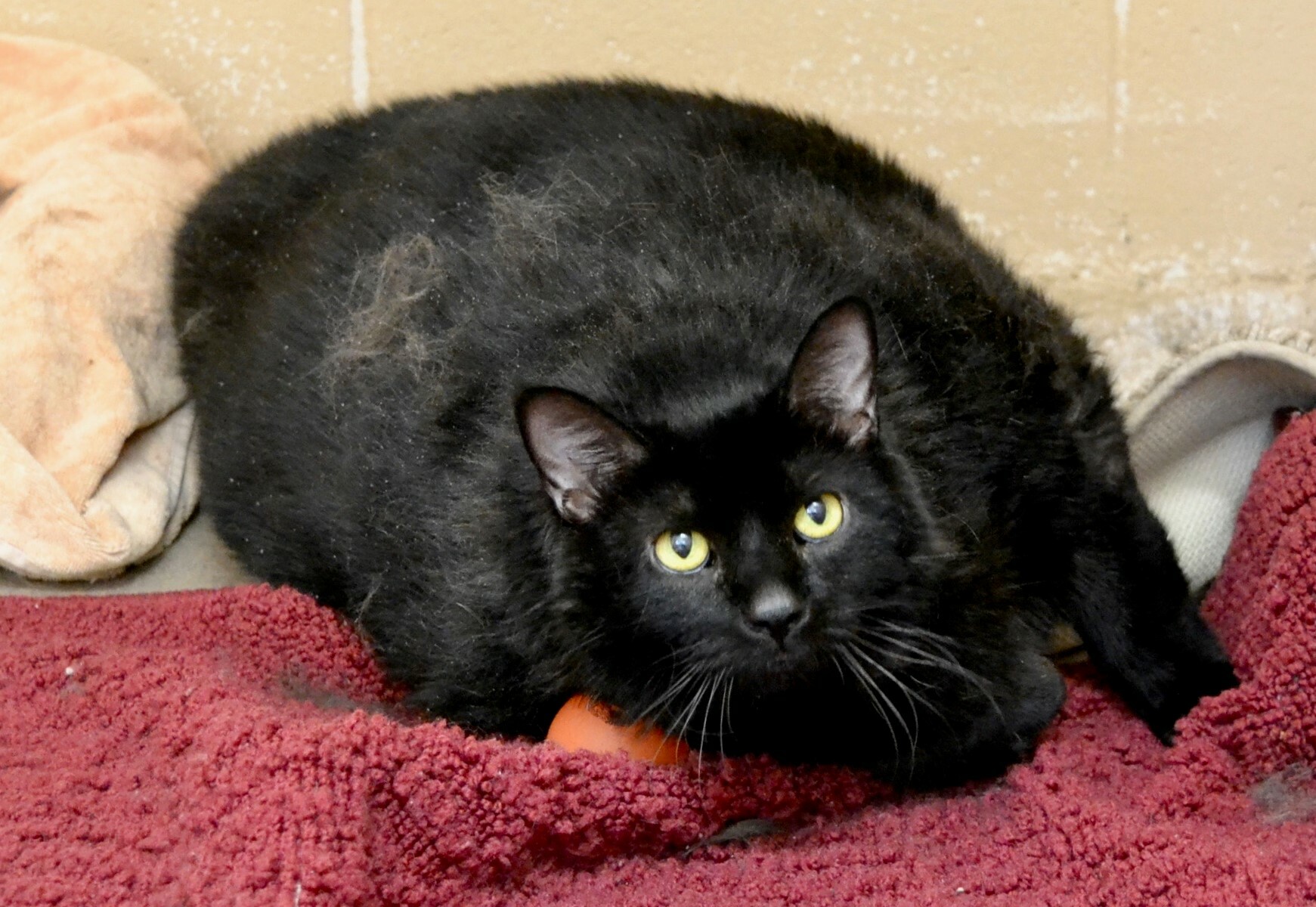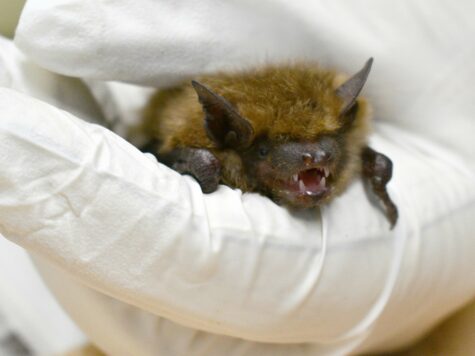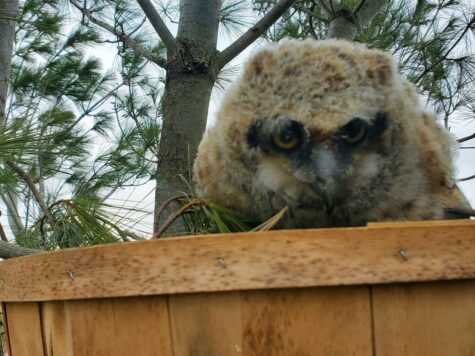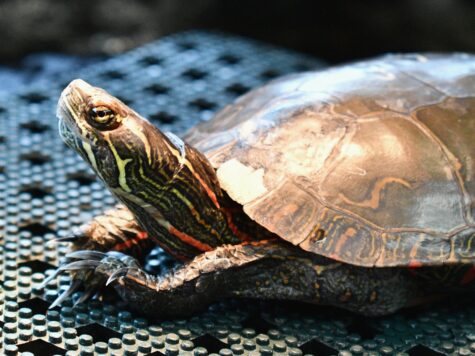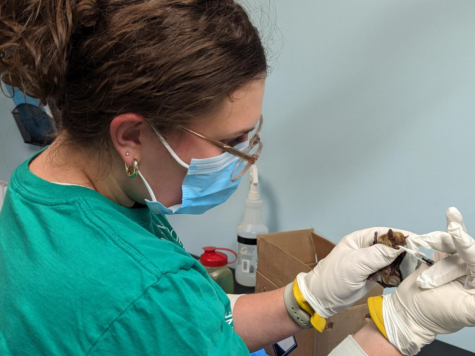With the New Year tends to come resolutions. For some, it’s the promise to lose weight, join a gym, or eat more healthy foods. Why not use this opportunity to make a resolution to help your pet get to and maintain a healthy weight?
Helping your pet reach and maintain a healthy weight is essential to their well-being. It can help prevent diseases like diabetes, arthritis, or joint issues, which means happier pets and savings on future vet bills. Pets that maintain a healthy weight will have more vitality, they’ll live longer, and studies have shown they’re more affectionate, according to Dr. Ken Lambrecht, veterinarian and owner of West Towne Veterinary Center and Bug’s Cat Gym, medical director of Fit Pets for Rescues, and co-founder of Healthy Pet Connect, a telemonitoring app that helps you maintain your pet’s healthy weight.
While helping your pet lose weight may seem impossible, it is very doable. Take Spudge, for instance. Spudge outlived his pet parent and extended family was unable to care for him, so he was surrendered to Dane County Humane Society in early June 2021. But Spudge was no ordinary kitty – he was a 37-pound cat!
Our Admitting Technicians noted Spudge was so large that they were unsure if he could walk because he only rolled and twisted during his initial exam. He was very uncomfortable being picked up and would swat when they tried to touch his feet or belly. They also found matting in his fur and some skin issues, likely due to his inability to self-groom because he couldn’t reach areas on his body.
There was one silver lining: Spudge didn’t have diabetes, which could have complicated his weight loss and adoptability. DCHS veterinarians wanted to help Spudge lose at least 10 pounds, but when they tried to encourage Spudge to exercise by walking from one end of a room to another, he only took a couple steps before laying down to rest. He was going to need long term support to get back on his feet.
Luckily, Spudge got the best foster placement possible for his special needs – a long term stay at West Towne Veterinary Center. Spudge joined Bug’s Cat Gym and was monitored by a veterinarian well-versed in weight management, Dr. Ken.
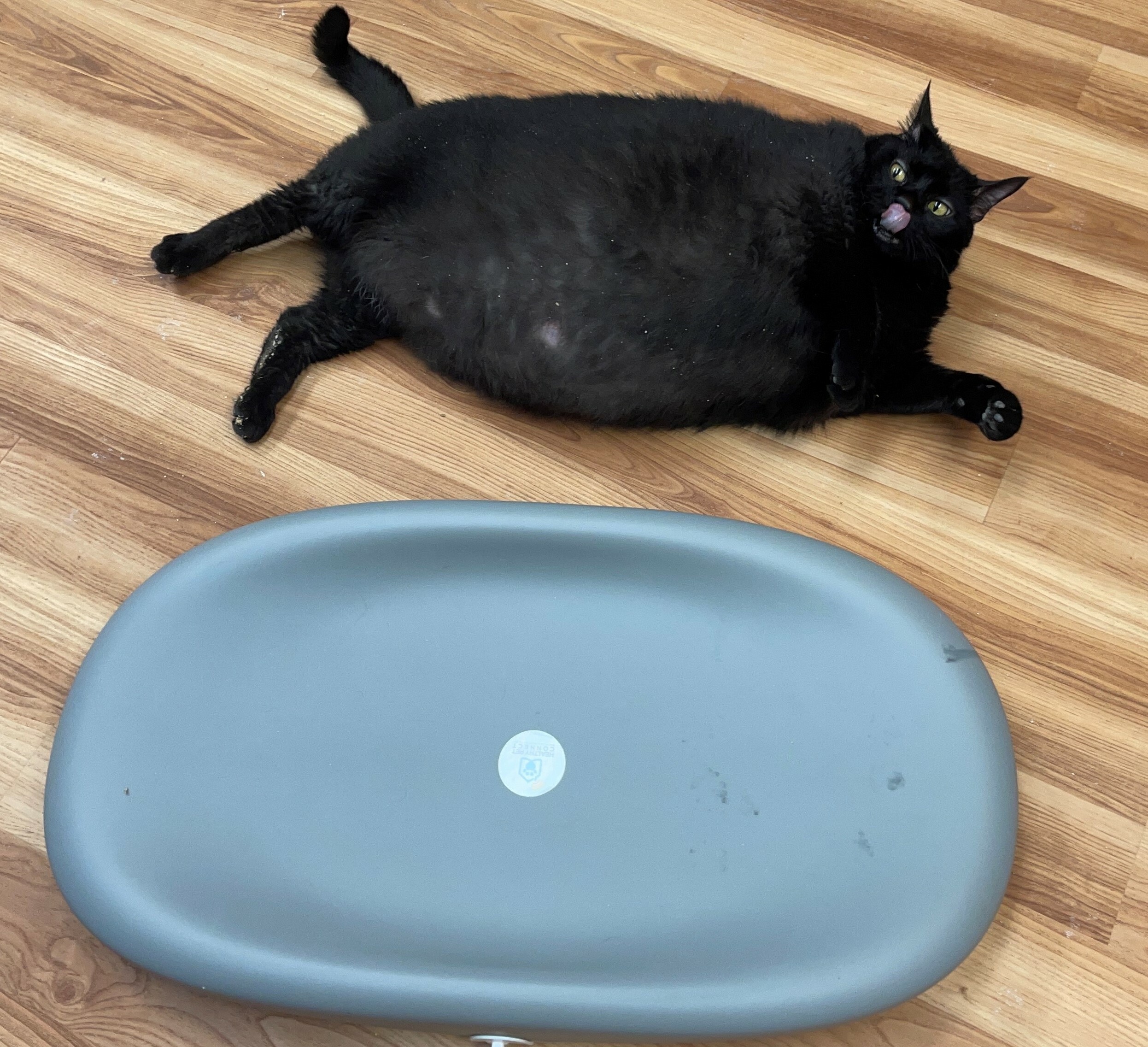
“The biggest reason I got into weight management was the Purina Longevity study published in 2002 that showed a dog that’s kept at ideal weight lives 15 percent longer,” says Dr. Ken. “That really changed the whole course of my professional focus.”
When 8-year-old Spudge arrived at Bug’s Cat Gym at West Towne Veterinary Center in June 2021, he was two pounds shy of the world record of 39 pounds, according to Dr. Ken, who hoped to get Spudge down to about 13 pounds.
“The biggest two things we’re trying to prevent are diabetes and arthritis. Those are huge problems for literally every cat,” Dr. Ken says. “Ninety percent of cats at age 10 have arthritis. The risk of diabetes I think is at least 10- or 20-fold for an overweight cat. So that was our race with Spudge.”
And there was one other issue Spudge faced in his weight loss journey. “The really important thing in cats like Spudge is that if we don’t give them enough protein, cats can go into liver failure and lose muscle mass,” Dr. Ken says.
Recent research shows if you‘re using a prescription food and keep the protein above 40 percent, it’s pretty safe, according to Dr. Ken. “Spudge is being fed a food that’s 56 percent protein,” says Dr. Ken.
By September 2021, Spudge had his waist back. And after working on his weight loss for more than a year, Spudge was down almost 16 pounds! He weighed 13.21 pounds as of December 2022, a 24-pound total loss in a year and a half or the weight of two large or three small cats!
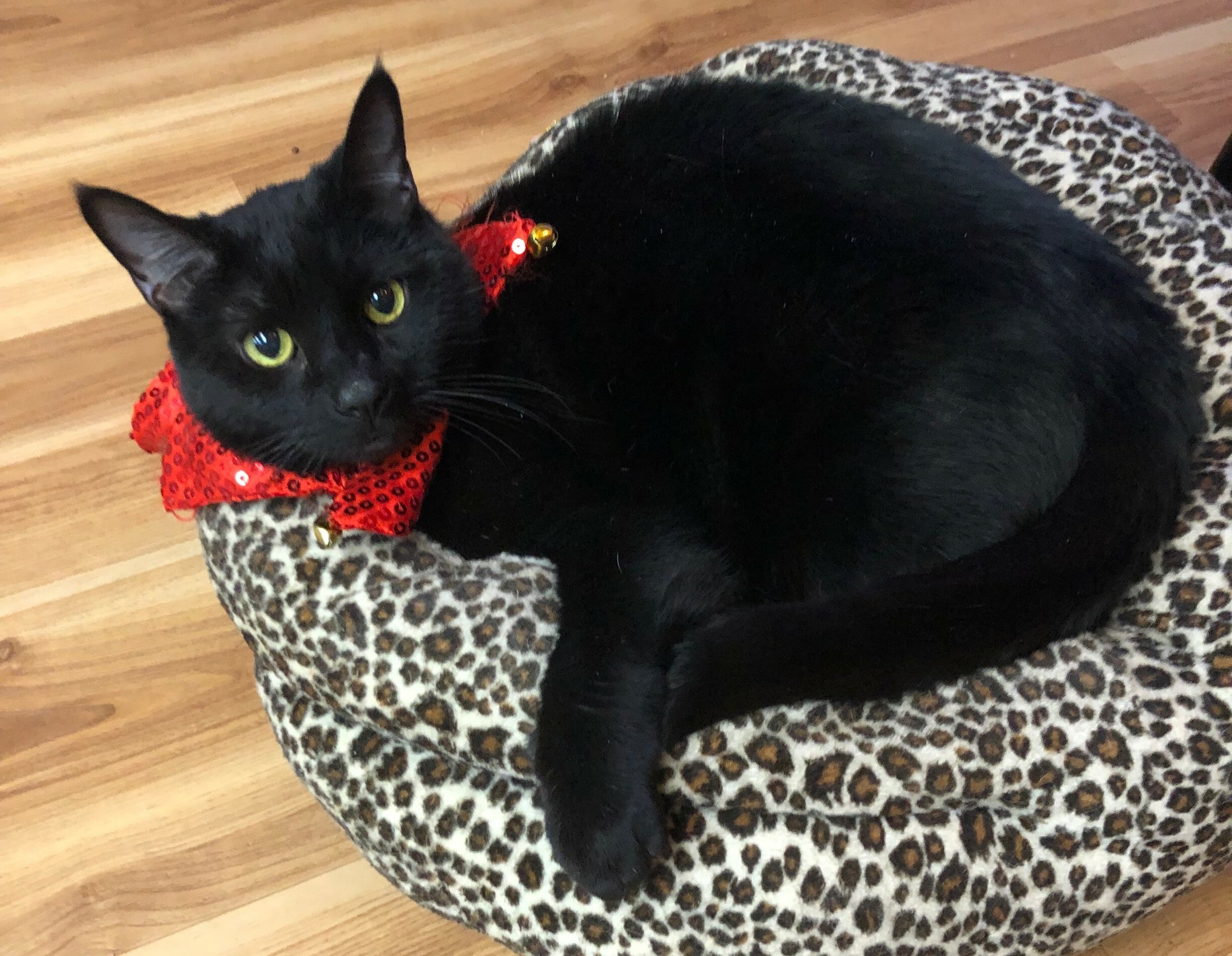
Dr. Ken and his team regularly checked Spudge’s blood and he never developed diabetes. While is it still possible, it’s much less common if cats are a normal weight, according to Dr. Ken. Spudge, now 9 years old, also could develop arthritis, which is why Dr. Ken gives Spudge fish oils and joint supplements. “I think all cats could benefit and they’re safe. They’d just have to be high-quality and right amount,” he adds.
In addition to helping Spudge lose weight, Healthy Pet Connect’s Fit Pets for Rescues program and contests makes a donation to the participant’s rescue of choice. West Towne Veterinary Center pledged $20 for each pound Spudge lost, resulting in over $500 to DCHS. From 2011 to 2020, Fit Pets for Rescues has raised over $25,000 for local rescues.
Pet families should consult with their veterinarians on how to help their furry friend lose weight or maintain healthy weight. Obesity is a disease and has many co-morbidities that need to be identified and the rate of loss is critically important, according to Dr. Ken.
When discussing Spudge’s weight loss, Dr. Ken says, “I can’t believe how well he’s done. When he first came to us, he could only walk five steps. And now he runs across the room like a kitten.”
So how did Spudge succeed in losing weight?
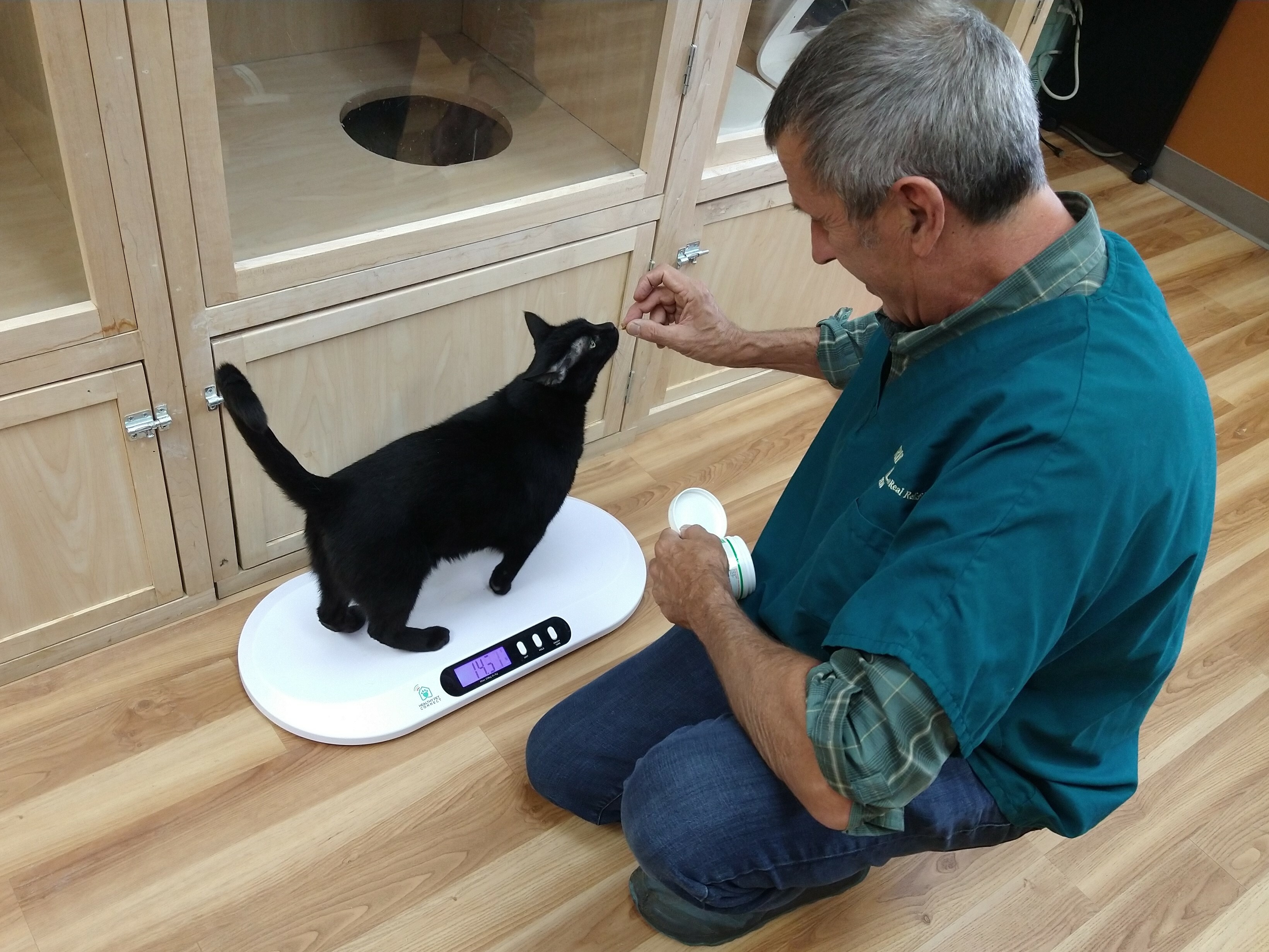
It’s All About Weighing the Pet and Their Food
In addition to providing a prescription, high-protein diet, staff doesn’t measure Spudge’s food by volume; they weigh it. “Weighing the food in small pets under 20 pounds is absolutely a game changer. It gets you down to the gram,” says Dr. Ken.
When using measuring cups, it’s so easy to give additional pieces of kibble, and those inaccurate measurements can quickly cause your pet to add more pounds. Using a food scale helps you give your cat the proper amount of food.
In addition to weighing food, Spudge was also weighed more often. Usually, pets are weighed once or twice a year at the vet during their checkup. But Dr. Ken says, “That’s really not enough. It is important in weight management to weigh at the same time every day. But what we do, we don’t adjust a rate of loss unless we see it going in a positive or negative trend for a week or two.”
While human scales have come a long way in accuracy, they’re not as great at weighing animals as a pet scale, according to Dr. Ken. “We need accuracy to 10 grams, .02 pounds, which is like fractions of an ounce,” says Dr. Ken. “If a cat’s losing weight, we have to account for their stomach contents, bladder and bowels and if all those are full, that could be 4 to 8 ounces.”
Spudge needed to get used to being weighed, so Dr. Ken placed a treat on the scale to encourage him to hop on. “We start getting them used to that and make it fun,” he explains.
If you are concerned about your pet’s weight, confer with your veterinarian about bringing your pet in to be weighed more frequently, or consider purchasing a baby or pet scale to keep at home. Then you can keep a close eye on weight changes without the trip to the vet!
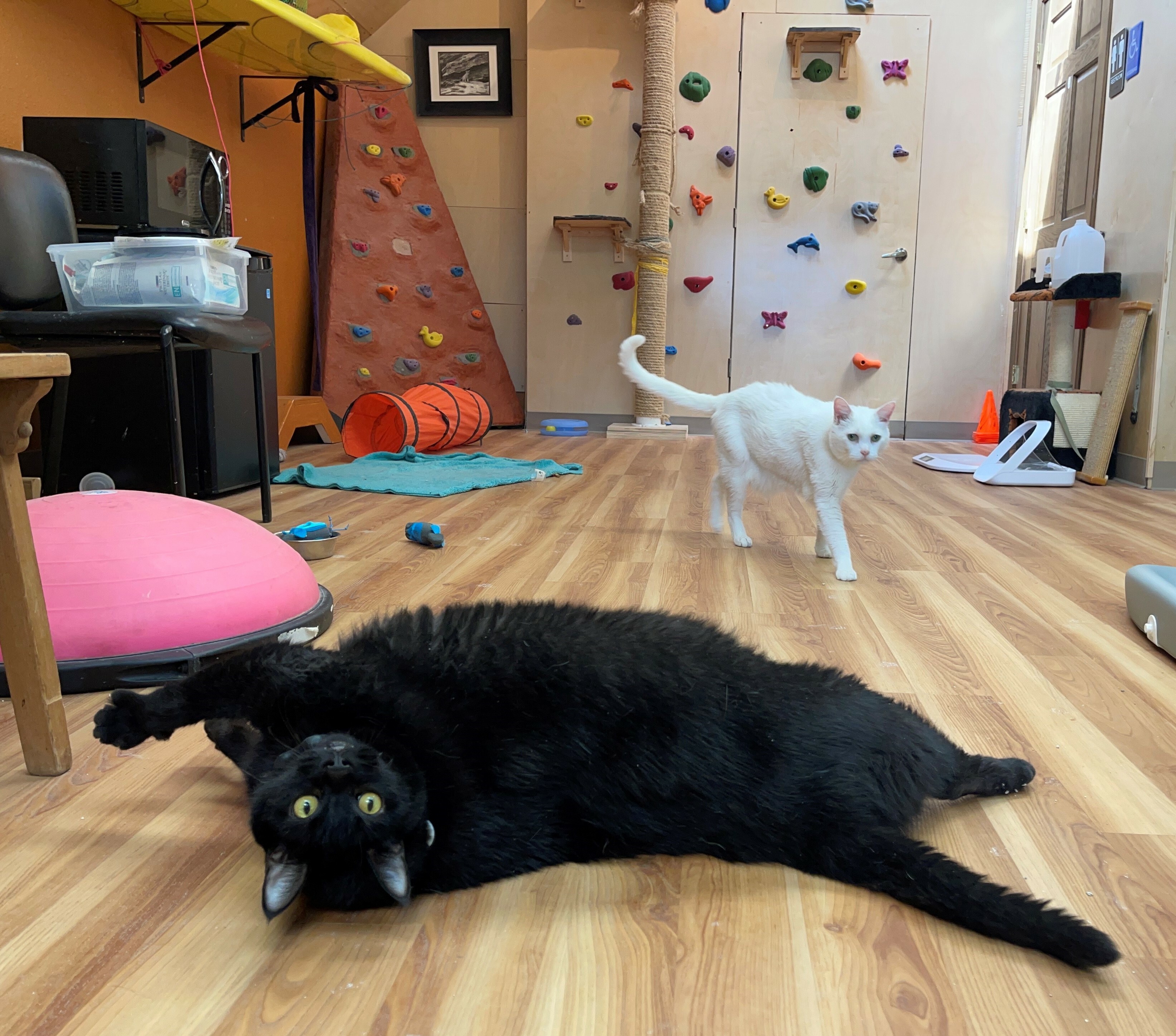
Challenge: Feeding Multiple Cats
Spudge wasn’t the only cat in Bug’s Cat Gym trying to shed weight. He shared the space with Aspen, age 9, who started at 15 pounds and had gotten down to 12 pounds as of October 2022. Aspen recently developed inflammatory bowel disease and now is being monitored so he doesn’t lose too much weight.
Unless you carefully monitor the cats as they eat, how can you prevent one cat from eating the other’s food? That’s the challenge for a number of cat households.
“The average U.S. cat household is 2.1. That means most of them are dealing with problems like you and I,” says Dr. Ken, who has four cats at home. (The writer of this article has three cats, two of which are grazers, whereas the third will eat everything.)
There’s a pilot study suggesting some cats may eat more in a multi-cat household because they think they will lose out on food, according to Dr. Ken.
“You can’t solve that problem easily and again the equipment is expensive.” But, Dr. Ken says, “There’s all kinds of creative things we’ve learned in Bug’s Gym of how to allow cats access to the food without the other ones.”
Healthy Pet Connect held a Fit Pets for Rescues contest with six cats from three organizations, including DCHS, and each cat was linked to a microchip-reading feeder at Bug’s Gym. Once the cats realized their portion was locked in feeders the others didn’t have access to, the cats didn’t act crazy about getting food, according to Dr. Ken. This also led to the cats eating smaller portions more often. “The cat is eating more naturally, which is six to eight times a day,” Dr. Ken adds.
If you have multiple cats and can’t monitor who’s eating what, you can invest in microchip-reading feeders and cat doors that meet your needs. Spudge and Aspen each have a microchip-reading feeder at Bug’s Gym, which only allowed them access to their own food.
Here’s how they work: You sync your cat’s microchip to the feeder or door and, when they go to eat, the door lifts to give them access to their food. If a different cat approaches to eat the food, the door will not lift.
“With the average household of over two cats, more people need it than not. It’s a game changer,” Dr Ken says of chip-activated feeders and door portals.
While food puzzles stimulate cats’ minds and may slow down how quickly the food is gobbled down, they don’t prevent other cats in the home from gaining access to the food. Also, studies have not shown feeders that promote hunting help with weight loss, according to Dr. Ken.
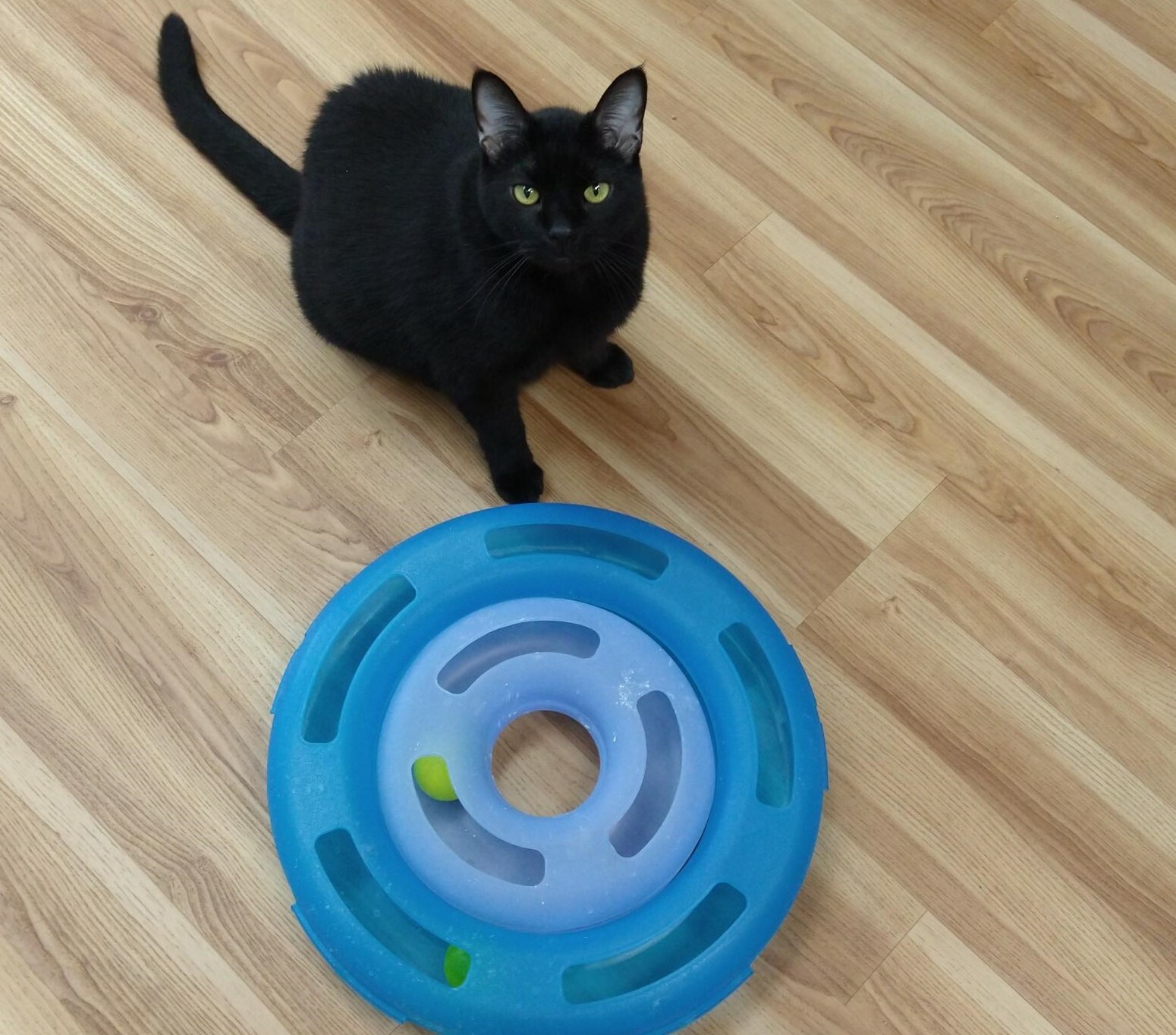
Body Condition Score and Counting Calories
While humans use the body mass index (BMI) to measure body fat, veterinarians look at the body condition score (BCS) for animals. BCS is a combination of visual assessment and palpating -- feeling the ribs, looking at the waist, looking at the legs. The gold standard is using a BCS 1 through 9 system, according to Dr. Ken. One is under the ideal weight, 5 is ideal, and 9 is over the ideal weight.
Using Pet Nutrition Alliance's website, pet parents can use the chart to determine their pet’s BCS. They can also use the website’s calculator to determine how many calories to feed their pet. The site has a calculator and BCS chart for cats and for dogs. This gives pet parents a great place to start a conversation with their pet’s vet.
“We use it every day in my practice,” Dr. Ken says. “If a pet is over a 6 out of 9 – with 5 out of 9 being ideal -- we send home a calorie recommendation. The fact is, if they’re a five, they could live up to 15 percent longer.”
According to Dr. Ken, the average female cat should weigh between 7 to 9 pounds, while male cats should weigh 10 to 12 pounds. This average does not account for larger cat breeds like Maine Coons.
When Dr. Ken determines a patient is overweight, oftentimes it’s because the pet parent switched foods and forgot to change the calorie intake. Beef versus salmon, chunks versus pate, it all has different calorie counts.
When helping your pet shed pounds, Dr. Ken says, “The most important thing is reassessment by your veterinarian in one to two months. How fast are they losing? Making sure that we lose fat, not muscle.
“The big difference in cats, they have two times the protein requirement of dogs. Dogs do not have the liver failure issue. Dogs can lose about twice as fast as cats, partly because of their size but partly because of their metabolism,” says Dr. Ken, who’s most severe obesity case in dogs was treating a 160-pound golden retriever who eventually got down to 70 pounds.
Dogs can be fed twice a day and just count the treats, according to Dr. Ken. For cats, “it’s the daily amount that’s most important. A cat’s stomach is the size of a golf ball. If you allow them to eat more, this is often why they vomit. They just overfill their stomach,” he says.
While Spudge’s weight loss journey has a happy ending, Spudge is also enjoying a new beginning: Dr. Ken and his team grew so attached to Spudge that they are in the process of adopting him. Happy New Year, Spudge!
